Competition between sexes and sea bream
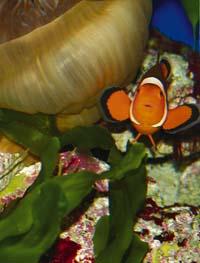
The truth is that the reproduction of fish gives enough to write a great book. We find numerous reproductive strategies that are reflected in sexual determination, in the organization of reproductive organs, in eggs, in the number of gametes produced and therefore of larvae, in the fertilization and development of embryos, in the relationships between the sexes and in the responsibility of the parents to the larvae. Hermaphroditism is no exception in fish, as it has been described in 35 different fish families since the time of Aristotle. In our seas and kitchens we can find representatives of 3 families of them: serránidos, lábridos and espádidos.
Most of the animals we know are gonocorstics, that is, male and female specimens. This sexual division is due to two mechanisms: sexual determination and sexual differentiation. It is clear that in humans sex is determined genetically, and for this we have sex chromosomes. The small Y chromosome that determines masculinity in the lottery of love sets in motion mechanisms of development that lead us to be males.

In fish all this is slower. Sexual determination is little known and has been investigated in few fish. We know that there are fish with little differentiated sex chromosomes and that in other species the sex determining genes are dispersed on multiple chromosomes. These genetic determinants act in most types of fish that are common to us. Thus, cod, hake, bonito, anchovy, sardine, verdel, chicharro, paneca, turbot, monkfish or salmon are distributed in male and female specimens following the indications of their genes. However, in some of these species, above what is determined by the genome, the environment can guide sexual differentiation (see below).
The evolution of some fish shows a tendency from gonocorism to hermaphroditism. Many fish, especially in the tropical zone, are simultaneous hermaphrodites. Its gonads are divided into male and female pieces, so sperm and eggs are produced together in all adult specimens. However, only one species is known, Rivulus marmoratus, in which self-fertilization occurs. All other species use sperm to fertilize eggs from another fish. This is the type of reproductive strategy used by the serránidos, among which is the very beloved crude here. In some fish of this type the market of gametes is organized. Egg production is much more energetically expensive than sperm production, so eggs will be given to another fish to fertilize with --sperm - in exchange for the eggs from the other. And that exchange can be mathematical, that is, if you give me 4 eggs, I give you 4 eggs! News


The bream is not the only one in this strategy, and many other sparid fish use this type of hermaphroditism called proterandría: dorado, lirón, aker and herrera. Many fish from the tropical coral reefs are also of this type. However, proterandría is not as widespread as the opposite strategy --proteroginia, that is, the first female -. For example, some species of merits and durdos, whistles, maidens and collapses, to mention species that are 'ours', come as females to sexual maturity and, with age, some specimens become males.
When size is important
But why? Or for what? Hermaphroditism is an evolutionary specialization from gonocorism, so sexual change should be a certain advantage. Of course, simultaneous hermaphroditism is advantageous, since it distributes among all individuals of the species the laborious work of egg production, while doubling reproductive possibilities. For example, abysmal fish have a difficult task of finding a partner in the great and dark sea. When they wander through their hunting fields, it must be a tragic fact to find another copy of their species and be of the same sex. News Hermaphroditism, on the other hand, guarantees that this encounter is for happiness and makes reproduction viable. This phenomenon has been observed in numerous abysmal species that do not illuminate, even in the Gulf of Bizkaia.
Regarding species that change sex in adulthood, according to the current hypothesis, sex change is related to size. That is, when being large is an advantage for the reproductive success of one of the sexes, a change of sex can occur. Thus, many proterogins are organized in the sands, where a large male fertilizes a variable number of females. For example, the male whippers of our sea form nests that attract the most females. For this they have to produce a lot of sperm. In addition, they will be responsible for the care and cleaning of the nest and larvae. This work will best be done by the largest animal group. If by any circumstances the male disappeared from a geographical area, the male would be the largest female that would have been better equipped to replace it in the group. This female, converted into a male, would increase her chances of reproduction. And so it happens: the largest female in the group develops the testicles.
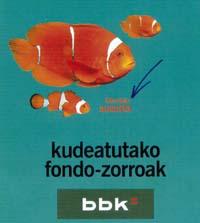
In proterandric species it is advantageous that females are as large as possible to make eggs more and better. Until the animal reaches a suitable size, sperm, which are cheaper to produce, are "manufactured." The problem of clowns fish shows nuances that have become commonplace for humans. The problem is the scarcity of affordable housing. In fact, the number of anemones suitable for living on the reefs is reduced, and these anemones are "single-family". Consequently, unmarried males have to live in the street. If the female of any anemone disappears, an immature male of 'street' will take its place. Then, the male who already lived in the anemone will become female: larger than the newcomer, is more prepared to be female. This 'sexual investment' is really 'brave', as the male clown fish only takes four days to develop adult ovaries.
How does the sex change occur?
Various experiments have shown that the time of sexual change is sensitive to the social environment. The development of reproductive organs of both sexes depends on endocrine communication between the brain and gonads, ensuring that the maturation of gonads corresponds to physical, chemical, social and seasonal signals. Gonadotropin and estrogen are involved in it.
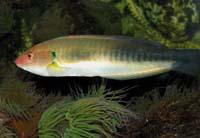
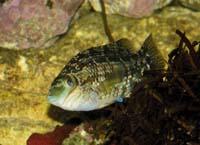
How do you change the levels of these hormones? How to switch from producing testosterone to producing estradiol or vice versa? If the disappearance of the female clown fish involves a sexual change of their partner, or if the largest female becomes male by the loss of the whistle 'king', it is evident that there are social interactions at the origin of these responses. The response should be governed by the brain, and it seems that the two enzymes, the aromases present in the brain and the ovaries, are responsible for it. Under these enzymes, testosterone is transformed into estradiol. It has been shown that by changing sex aromatases are activated or deactivated. In this way, the activation of cerebral aromatase has been detected in proterandric species, in sexual change in the female. Genes encoding these enzymes can be regulated based on external and internal factors such as stress, temperature and levels of hormones and neuropeptides.
Aquaculture, sex, money and God
Aquaculture is an increasingly important industry and at some point Euskal Herria will realize this importance, since it is a great fish consumer. In recent years, in the Spanish state, programs have been developed to explore ways of growth of new sparids. Established a National Special Plan of Marine Cultures for the growth of sea breams, and there is a Galician company that grows bream. Another plan has put strength in other areas: the nose, the hurt and the snapper. In the plan of the bream have participated the autonomous communities of Cantabria, Asturias, Galicia and Andalusia. The Basque Country is not interested in bream! News
It is necessary to develop new technologies in the fish industry. Some of these technological advances must take into account the sexual development of fish, since in many cases it is advisable to get monosexual fish stocks. As for various cultivated gonocorstic species, females have higher growth rates than males, reaching higher sizes. For example, turbot females grow 25% more than males. The same goes for salmonids and sea bass. Tilapia or phletan males are more "fast" than females. It is therefore a useful choice for the industry to influence the sexual distribution of fish. As has been seen, among fish with different sexual strategies there is a low adherence to sex. Since the environment plays an important role in the sexual differentiation of fish, and the human being has the possibility of conditioning the environment of fish, it can be God.
The most important environmental factor that conditions sex, in addition to the social environment, is temperature. In most thermosensitive species, the number of male fish increases with temperature. At low temperatures the formation of ovaries occurs. In the case of Sea bass the opposite happens. Among the lubines grown in captivity, sexual distribution is usually 3:1 in favor of males. In this case, at high temperatures, there is an equation of the distribution between sexes, which allows obtaining the piece of the ration that we sell in the supermarket more quickly.
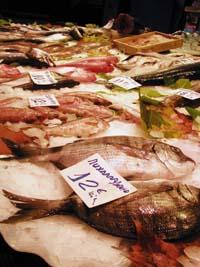
In aquaculture, fish can be treated with drugs like steroid hormones. In most fish, before the histological footprint of any type of gonad appears, the addition of oestrogen (both in food and water) can convert the fish population into female. It is convenient to use natural hormones, such as estradiol, and not synthetic hormones used for cow fattening. Natural hormones are more metabolizable and therefore have less survival in the environment. In addition, these treatments can be effective in the very short term, for example in the case of salmonids it is enough with two days. Thus, any hint of external estradiol before marketing could disappear from fish meat. It is necessary, in this case, to know the rock season for each species to reduce to the maximum the treatment.
Treating high-dose steroids can have side effects and sterilize fish. But sterilization has another utility: since fish does not invest in the development of gonads, larger specimens can be marketed. The commercialization can be extended throughout the year, outside the ripening season, guaranteeing an adequate quality of the meat.
In sex-altering hermaphroditic species there are also commercial or conservationist reasons to act as God (to develop repopulation plans). Several attempts have been made in Europe to raise some species of grouper. In the case of groupers, to reach adolescence the females need between 4 and 5 years and to get males must wait between 9 and 16 years. In these cases, hormone treatments can help minimize the time needed to reach adolescence, sexual investment, and sperm production. 17 -Using the hormone methyltestosterone have been obtained males for two years.

Risks of 'sex'
50 years ago it is not done, but before my housewives with the donkey went to Bermeo to sell the "bendeja", the orchards of the hamlet. For a few days, for two ounces, they returned home with a nice sea bream. However, in 1988 the 2,800 tons of sea bream coming out in the Cantabrian ports fell to 180. The population of besugo was destroyed and what is now sold at golden prices comes from Cadiz or Azore. What did that disappearance mean? The answer is that we do not know. Does the kissing strategy have anything to do with it? It is possible.
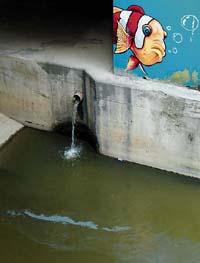
Now and before, the pieces that give money are large, the female besugas. They knew where they lived and a large fishing force was installed in those areas. It is not possible to prove it, but it could happen that in 1987 there were not enough females left to make the population viable. These kinds of problems have occurred in many places with different species of grouper. The best price in this case are males. Consequently, male specimens are exploited more and larger females are forced to become males. As the remaining minor and minor females, the quality of the eggs and the generations to come is lower, endangering certain populations of the world.
Pollution and temperature rise as a result of climate change are problems to increase. We have seen the influence of hormones and temperature in special times of life cycles of fish. Think about the number of women taking the anti-pregnancy pill in advanced territories, where a synthetic ethinyl estradiol is used with the same effect as estradiol. Think about where the hormone goes along with the urine of these women and how it can influence the sexual differentiation of the fauna of our rivers. Add soap alkyphenols or plastic phthalate steres capable of copying the effect of estradiol. It's scary, isn't it?
According to the shark Bruce in Nemo's film, "fish are our friends", we care, preserve, learn from them... eat. Happy! News







